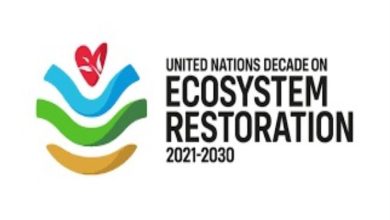Beyond PFAS: Safer Alternatives for Multiple Applications

For decades, per- and polyfluoroalkyl substances (PFAS) have been utilized across countless modern products for their grease, water, and stain-repellent properties.
However, these pervasive industrial chemicals eventually garnered a lot of scrutiny for their negative health impacts. Certain PFAS compounds bioaccumulate in the human body and environment and have been linked to developmental issues, cancer, liver damage, and birth defects.
These revelations have triggered a major push to develop and implement safer PFAS alternatives across industries. In this blog, we will explore mounting calls to phase out toxic PFAS along with promising innovations working to replace these chemicals in vital applications like food packaging and firefighting foam.
The Push to Eliminate PFAS
According to TorHoerman Law, PFAS compounds became a linchpin for food packaging and takeout containers, enabling grease resistance that preserved food integrity.
In the 1970s, the military used PFAS-laden firefighting foam in almost all of its bases. This step was touted as revolutionary, as this firefighting foam, also known as aqueous film-forming foam (AFFF), became a critical means for extinguishing petroleum-based fires.
This resulted in standardizing the use of AFFF across airports and military bases. These were dependent on PFAS chemicals to combat severe fuel blazes.
For decades, companies and regulators remained unaware of the long-term risks surrounding PFAS and its bioaccumulative impacts. However, by the early 2000s, a growing body of concerning research revealed that PFAS and its derivatives indeed posed threats to the environment and human health.
Communities exposed to concentrated PFAS from military AFFF usage reported abnormal cancer clusters, sparking medical investigations into the chemicals. In the past decade or so, many veterans have actively filed lawsuits against the manufacturers of firefighting foam. According to them, these companies knew about the dangers associated with AFFF foams but kept silent.
If you or anyone you know has suffered due to the AFFF foam-induced health concerns, you can file a firefighting foam lawsuit.
National surveys revealed traces of the stubborn compounds accumulating across greater US drinking water sources, alarming public health experts about chemicals so environmentally persistent, earning the ominous “forever chemicals” moniker.
With PFAS hazards gaining clarity, recommendations around severe restrictions followed.
Innovations in PFAS-Free Replacements
Limiting the use of toxic PFAS relies on developing commercially viable replacements that can provide the needed performance without contamination concerns.
Fortunately, crucial strides are being made on multiple solutions, from grease-resistant repellants to firefighting tools, using eco-friendly materials and water-based chemicals instead of fluorinated compounds.
Biopolymer Coatings
Derived from plant-based materials, these sustainable barriers use renewable oils to repel moisture and oil. Though durability has been found to not match the hardcore standards of PFAS, biopolymer’s biodegradability offsets its drawbacks.
As technology and scale continue to improve, biopolymer efficacy is approaching fluorinated compounds while maintaining food contact safety due to their non-toxic compositions from crops like palm and castor beans.
Water-Based Citric Acid Chemistry
Major fast food chains already apply citric acid coatings to starch (biopolymer) wraps and boxes. Citric acid can crosslink with starch chains and form a three-dimensional structure. This improves the barrier and mechanical properties of starch-based food coatings.
Moreover, these liquid-formed coatings provide non-toxic grease resistance, replicating the PFAS function. Performance tradeoffs do exist, but safety benchmarks make them a preferred choice.
Nanocellulose Films
Microscopic cellulose fibers extracted from timber and crops create affordable hydrophobic sheets that block oil spills when lining food containers.
Renewable and compostable, nanocellulose also boasts strength, matching plastic at a fraction of its weight. However, converting research into commercial applications to take on their fluorinated counterparts will take some time.
Fluorine-Free Fire Suppression Foam
As a PFAS alternative for aviation and facilities, synthetic foam options without fluorine have demonstrated effectiveness in battling oil and alcohol fires.
Many derivatives of this foam solution use food-grade polymers to create aqueous films to douse liquid fires. However, approval for US military specifications depends on passing stringent tests.
Overcoming Transition Challenges
Despite promising innovations, replacing omnipresent PFAS applications comes with difficulties, from public pushback over higher costs to market obstacles still limiting alternative scales.
Initially, you might get frustrated with the costs and problems in the supply chain during this switch to eco-friendly options. Moreover, you may feel that you are sacrificing your comfort and convenience. But you need to understand that these PFAS alternatives bring with them a sustainable future.
Policymakers need to keep small businesses in mind. These entities might not be able to completely phase out PFAS from their productions. Reasonable standards need to be set that help the environment without putting too much pressure on small businesses.
Transitioning from ever-convenient yet toxic PFAS commodities depends on our shared understanding of risks, which justifies this complex shift. At the same time, we need to support entrepreneurs and brands navigating uncharted territory to uphold their operations.

